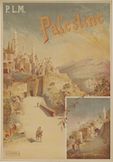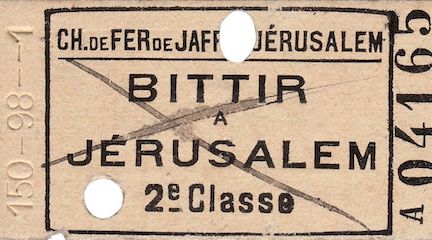American Tourists and the Holy Land, 1865-1900

Students analyze maps, travel posters, and the writings of Mark Twain to explore expectations versus reality. They then plan their own itinerary for American tourists.
In this teaching module from the Shapell Manuscript Foundation in collaboration with the Roy Rosenzweig Center for History and New Mediastudents learn how to examine engaging primary sources including travel posters, train tickets, maps, and a letter written by Mark Twain to better understand the attitudes and experiences of Americans who travelled to British Palestine in the late 1800s.
Students work in small groups to analyze sources and think through what kinds of expectations Americans might have had about the Holy Land before they travelled there. Students are also encouraged to explore what technological changes allowed tourists the opportunity to travel across the ocean. Primary sources such as travel posters present an idealized version of the places that Americans were familiar with from the Bible.
After analyzing these primary sources students work in groups to create their own travel itineraries and promotional posters or pamphlets to advertise tours in the Holy Land. These can be physical materials or students may use digital tools to create their promotional materials. The modules also contain guidance on differentiation for diverse learners and connections to standards.

Yes
Yes
Yes
Students show their understanding through primary source analysis and creating visual media.
Yes
Requires close reading and attention to source information.
Yes
Yes
Yes
Yes
Yes